Scientists document historic shipwrecks in Stellwagen Bank National Marine Sanctuary
By Ellie Cherryhomes
December 2019
Descending into the depths of NOAA’s Stellwagen Bank National Marine Sanctuary, a remotely operated vehicle streams live video to a group of researchers floating above. When the image of a century-old shipwreck appears on a screen in the ship’s cramped lab, the scientists lean in, eager to unlock questions regarding the vessel and the creatures that live there. Researchers from Woods Hole Oceanographic Institution (WHOI) have entered the underwater world in search of answers to questions that combine the archaeology and biology of this special place. With this new view, they are now one step closer to answering them.
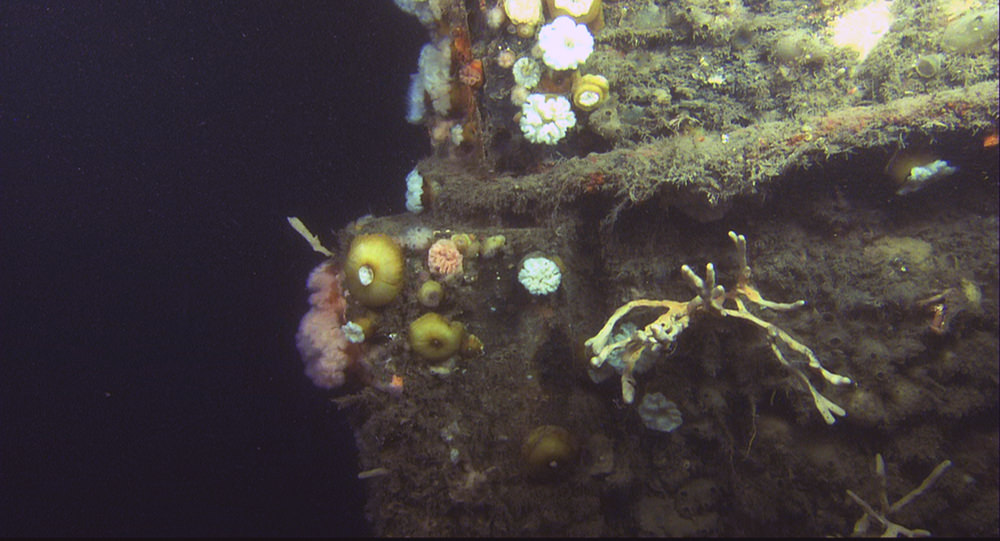
Diving underneath the surface
This summer, we teamed up with WHOI and Marine Imaging Technologies to get a look at historic shipwrecks in Stellwagen Bank National Marine Sanctuary. The team conducted biological and archaeological surveys of key shipwrecks while aboard the research vessels (R/V) Connecticut and Dawn Treader. Live broadcasts from sea allowed both students and the public to embark on the journey and observe this interdisciplinary expedition.
For this expedition – the first in a three-year study funded by NOAA’s Office of National Marine Sanctuaries – scientists assessed the shipwrecks Portland, Frank A. Palmer, and Louise B. Crary. The expedition served a three-fold purpose. First, WHOI archaeologist Dr. Calvin Mires would survey the current condition of the wrecks to better understand the ships’ final moments and how they have changed over time on the seafloor. Additionally, WHOI marine biologist Dr. Kirstin Meyer-Kaiser would investigate how the wrecks have transformed into biological communities, document what species live on and around the wrecks, and compare these communities to that of the natural hard-bottom ecosystem throughout Stellwagen Bank National Marine Sanctuary. Lastly, the expedition invited the public to join the researchers through live broadcasting to help make science more accessible.
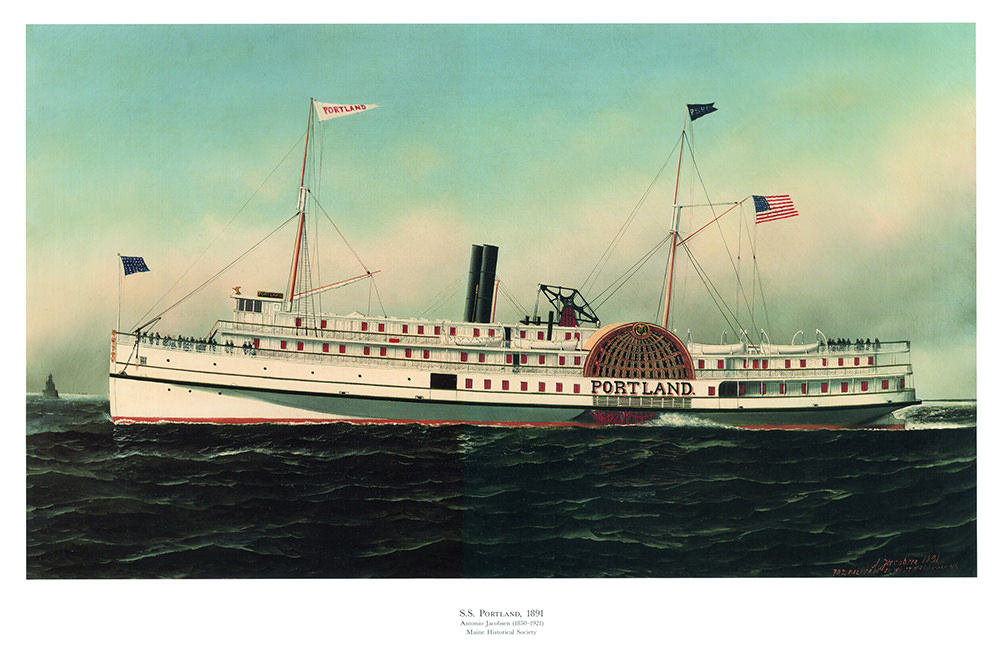
Honoring lost tales
Stellwagen Bank, the central geological feature of the sanctuary, is an underwater plateau and a biological hotspot off the coast of Boston. Historically, the abundance of sea life in this area created productive fishing grounds that still attract fishermen. Seabirds, fish, humpback whales, and the critically endangered North Atlantic right whale all gather here. Yet, swiftly changing meteorological and oceanographic conditions can make this region dangerous for humans to navigate and have speckled the seafloor with over 200 shipwrecks.
The shipwrecks of Stellwagen Bank National Marine Sanctuary connect this special ocean area to New England's rich maritime past. Marine Imaging Technologies deployed its cutting-edge, cinema-class remotely operated vehicle (ROV) Pixel to survey the wrecks. Pixel captured cinema-grade images and ultra-high-definition video from the seafloor.
Using data points collected by Pixel, the team is creating three-dimensional volumetric models to measure and assess the condition of the wrecks and give virtual underwater tours from captured 360° video. With the models, researchers can see the wrecks without the typical visual limitations of the underwater environment due to depth, lighting, and water clarity. The preliminary model of Portland shows several fishing nets on the wreck: fishing is allowed in Stellwagen Bank National Marine Sanctuary, and fishing gear can catch on shipwrecks. These nets can entangle marine animals and destroy historical resources.
For Mires, accessing these wrecks is about more than observing the state of the artifacts. Portland is often referred to as “New England’s Titanic.” During Thanksgiving weekend of 1898, almost 200 passengers aboard the steamer lost their lives when the ship sank in a storm now known as the Portland Gale. Twenty-five of the 64 crew members onboard were African American, many from Portland, Maine, and their deaths altered the fabric of the African American community in the city. “It’s about the person who woke up, made the meals, cleaned the beds, the person that just wanted to get home,” says Mires. “If the wrecks are just destroyed, these stories get lost. These stories aren’t about famous people; they are about the forgotten voices and unheard voices.”
“One of the reasons we go back is the opportunity to remind ourselves that these stories are out there,” he adds. “As archaeologists and scientists, we are a part of that story and it doesn’t end.”
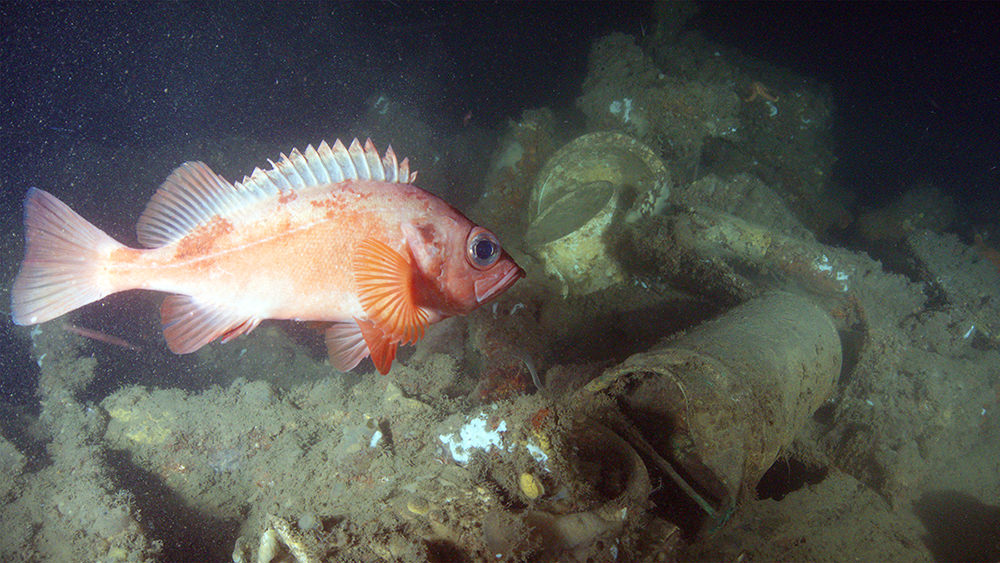
Life on the wrecks
In addition to being artifacts of human history, shipwrecks provide homes to a variety of ocean organisms. Meyer-Kaiser conducted biological surveys to document the colonization of the wrecks and to see what communities live there now in comparison to previous years. “Shipwrecks are interesting because they are usually isolated and island-like, often sitting out in the middle of mud or sand,” she says. Muddy and sandy seabeds don’t provide needed anchor points for animals like anemones or shelter and hiding spots for fish. Wrecks can provide both of these features. “They are especially interesting because by definition they are not supposed to be there. That means anything that is living there got there by mistake or because of some variation in its dispersal that we don't know about,” says Meyer-Kaiser.
Larvae of seafloor animals such as anemones and sponges that dominate the wreck communities can be carried by ocean currents, while mobile species like crabs and sea stars can crawl or swim from neighboring reefs. Additionally, shipwrecks facilitate high-density populations because the animals have less competition there. They are dynamic habitats that become integral to the ecosystem, says Meyer-Kaiser.
She found that the most common species on the Portland are sponges and anemones and that their populations have increased since the wreck was photographed in past missions. The team discovered a few new species colonizing the wreck. “Portland also had high numbers of Acadian redfish this year, whereas cod and pollock were more common in previous years,” said Meyer-Kaiser. “I'm still not sure what caused this difference, but it represents a major change in the community from previous years,” she notes.
She is particularly interested in how the larvae of these animals disperse to the sites and where they come from. In the next two years of this series of expeditions, Meyer-Kaiser will continue to investigate this dispersal.
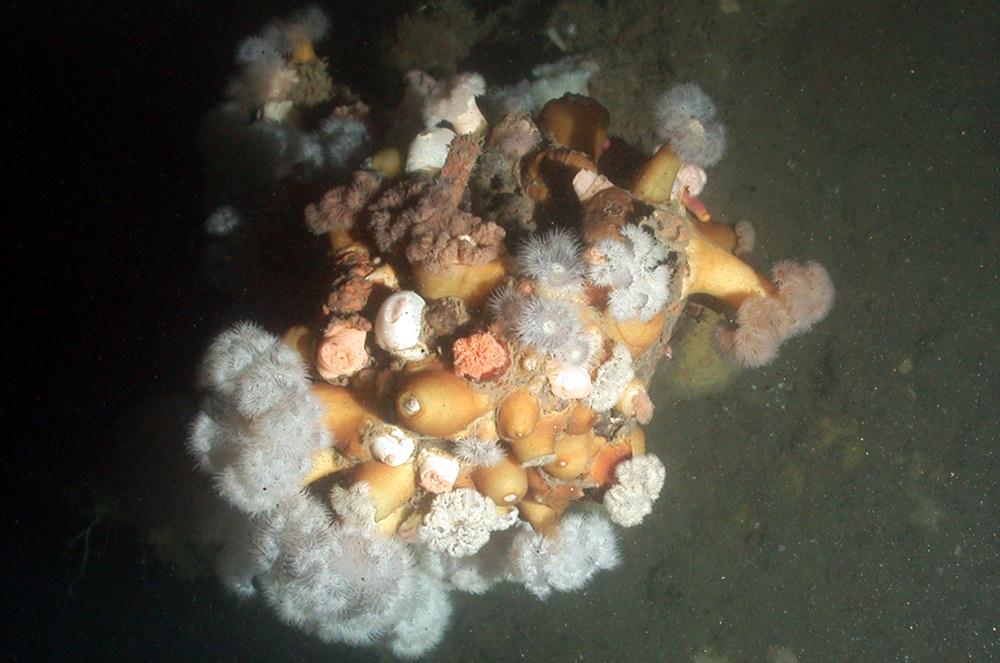
Making science accessible from sea to shore
Deep-sea exploration once had an audience limited to researchers aboard the vessel. Live ship-to-shore interactions during this expedition significantly expanded who could witness and participate in this oceanographic research. While the research was happening, 1,415 students and 9,956 web viewers from around the world were able to converse with the scientists, engineers, and team members aboard the R/V Connecticut. In addition to interviews with the research team, a memorial ceremony to commemorate the tragedy of the Portland Gale was broadcast live for people to view and honor the cultural heritage within the sanctuary. The livestream and ship-to-shore events allow the public to witness and access scientific research and experts.
"We have several stunning and dramatic historic shipwrecks in the sanctuary, so partnering with WHOI's excellent researchers and technology to investigate the wrecks was a dream come true,” says Ben Haskell, Stellwagen Bank National Marine Sanctuary deputy superintendent. “The visuals collected by Pixel bring the wreck to life, while the 3D models generated from this expedition will be used to help build awareness of these sites and the threats they face.”
Over the next two years, the expedition team will continue to investigate the biological role shipwrecks play in Stellwagen Bank National Marine Sanctuary and document changes that have occurred.
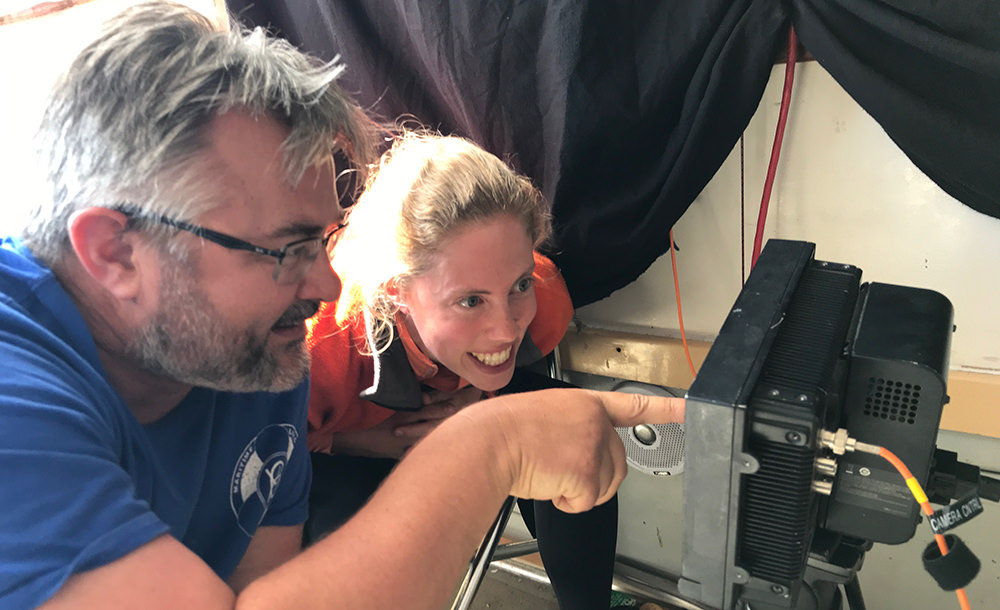
Ellie Cherryhomes is a journalism student at the University of Missouri and a Virtual Student Federal Service intern with NOAA’s Office of National Marine Sanctuaries.

